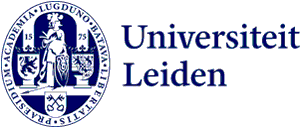
NWO and ERC grant for research on Chinese infrastructure
In the coming years, Hilde De Weerdt gets to spend over three million euros. She received grants from both the European Research Council (ERC) and the Dutch Research Council (NWO) for research on Chinese infrastructure. ‘It is great that it is also possible to develop large projects in the social sciences and humanities.’

Both grants will fund research on Chinese infrastructure. De Weerdt and her team will study the construction of bridges, roads, and city walls. ‘In the early modern period, when members of the Dutch East India Company or the Jesuits travelled from Europe to China, they were very impressed by Chinese infrastructure,’ says De Weerdt. ‘In their eyes, this helped explain China’s economic prosperity and stability. This view has had a long history, with most attention focused on a small number of big, emblematic projects such as the Great Wall, the city walls of Xi’an, and the Great Canal.’
De Weerdt argues that there is early evidence to doubt the assumption that walls and other infrastructure were ubiquitous in China. ‘During the Middle Ages, some already reported that many places did not have city walls, that they were in decay, or that sheep grazed on walls that had fallen in disrepair.’ According to her, there were periods of infrastructural expansion and times of infrastructural contraction. Infrastructure also differed greatly from region to region. ‘We aim to examine how infrastructure functions on a cultural and social level: Who participates? Who benefits? What meanings are attached to different types of infrastructure? Can we write a regional history of China by mapping infrastructural growth and contraction?’
ERC advanced grant
This work will be largely funded by an ERC advanced grant, worth 2,5 million euros. ‘In this project, we will be looking at every region in China, excepting the southeast, from 1000 to 1800. In order to write the social and cultural history of infrastructure before the Industrial Revolution, we will map all sorts of events during which bridges, city walls, and roads were constructed, destroyed, or renovated.’
Such events can still be easily traced in the 21st century because details about the structures were engraved on large stone steles and recorded in local histories of which thousands remain today. ‘Those texts mentioned who contributed, what materials were used, how many workers were involved, et cetera.’ By now, almost all of these texts have been digitised. ‘We want to use this data to answer the question ‘what is a region?’ from a completely new perspective, for example, by examining where clusters with similar infrastructural features are located.’
NWO grant
The NWO grant of 750,000 euros will be used for additional research on the infrastructural history of southeast China and the link between this region and Southeast Asia. ‘Infrastructure is of course a technology that can be exported. We want to investigate how it spread regionally across cultural borders.’
This project’s findings will also be shared with broader audiences in various ways, including an event about city walls in the Netherlands and China, and potentially by crowdsourcing historic photographic material. De Weerdt would also like to involve construction companies. ‘We will automatically extract information from archaeological reports. Because it is required for companies to perform archaeological research before they construct roads or build houses, it is possible that they might be interested in our work. I am partly interested in this because my family, on both sides, was involved in construction. My mother has sadly passed away, but maybe now she’ll think: everything turned out fine with Hilde after all.’
Methods and the unexpected
De Weerdt is very much looking forward to developing new methodologies for historical research: ‘I obtained an ERC grant before and learned that large-scale projects of this sort can be a mixed bag. People think that you get to spend five years exclusively on research, but that is not how it works. You only get a very limited amount of time and you mainly end up doing a lot of administration. However, you get to learn a lot about things that you would like to do, but that you don’t have the time for yourself. I can now hire one or more experts in digital archaeology, a computer scientist with a specialization in artificial intelligence and two PhD students and two postdocs with whom I can cover a much broader range of Chinese history than I could by myself. That is very enriching.’
The planned methodological innovations also appeal to her. ‘During my previous ERC project, we generalised a methodology to annotate digital texts and made it available on a digital platform called MARKUS. It was an unexpected success and is now used in various fields: arts, religion, but also medicine, for example.’ This methodology will be refined in the coming years. The platform should not only enable the automatic recognition of entities such as place names or personal names, but should also include a new module to annotate hierarchical relationships among these types of annotations. ‘Methods can become outdated really quickly. That is why we want to further develop the MARKUS platform. I also hope that we will once more come up with larger contributions that we had not foreseen in the original research proposal.’
Hilde De Weerdt is Professor of Chinese History at the Institute for Area Studies. She works on imperial Chinese intellectual and political history
